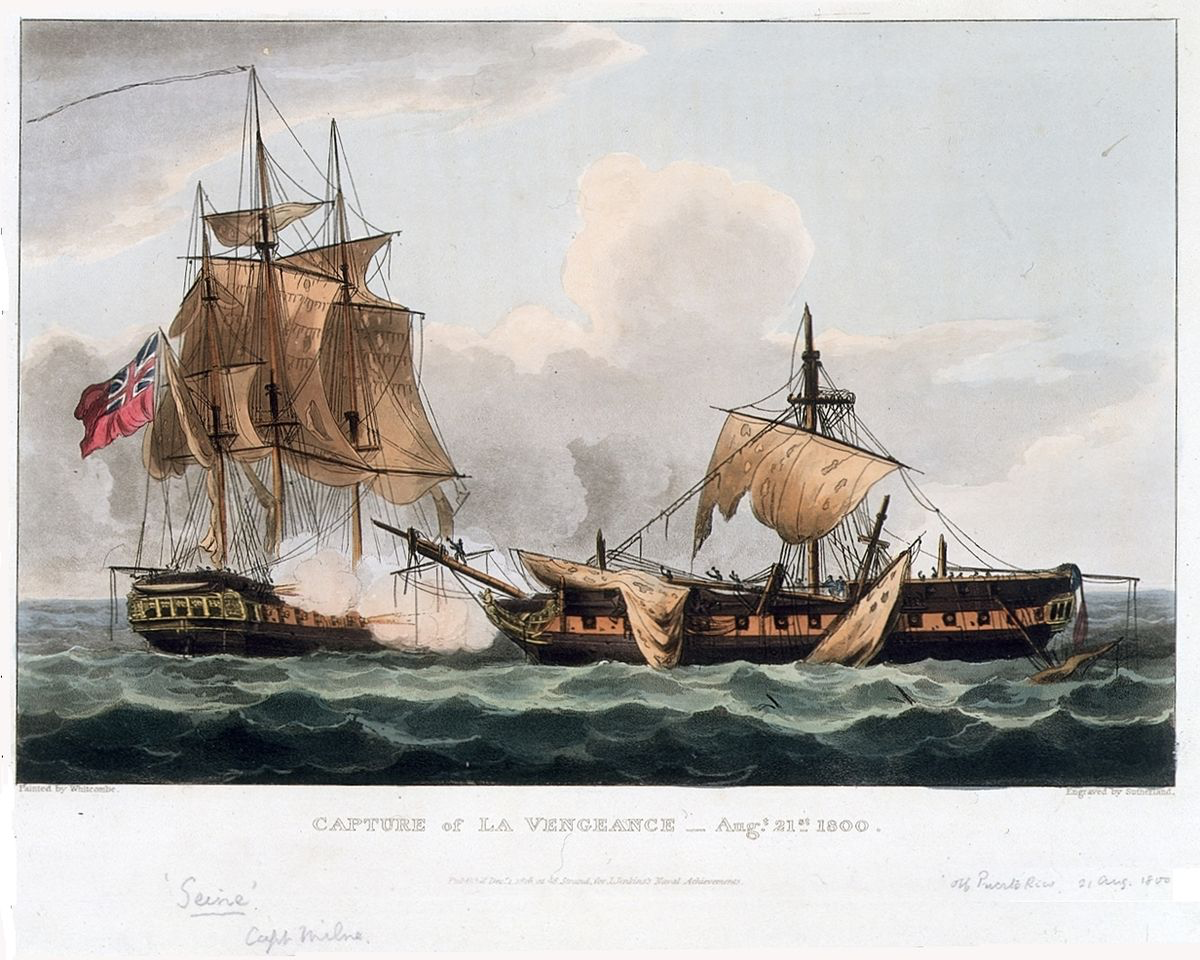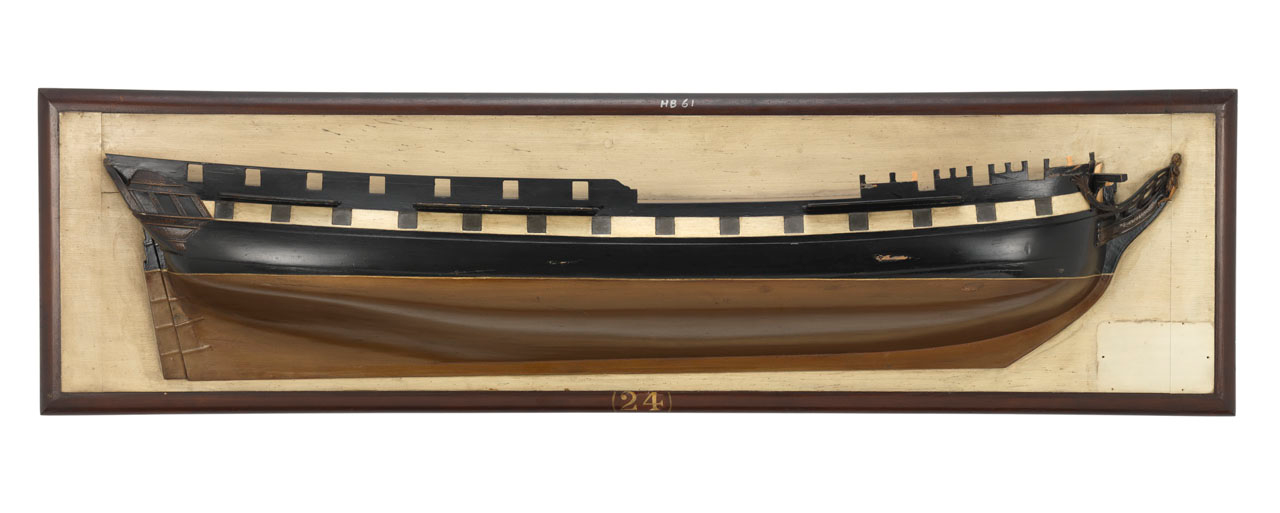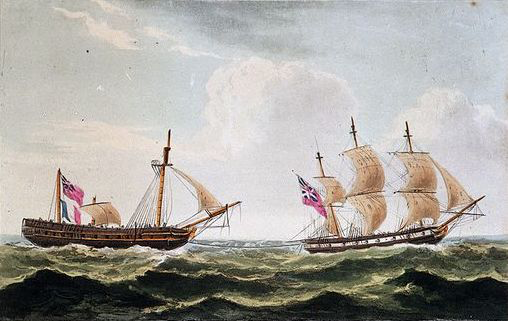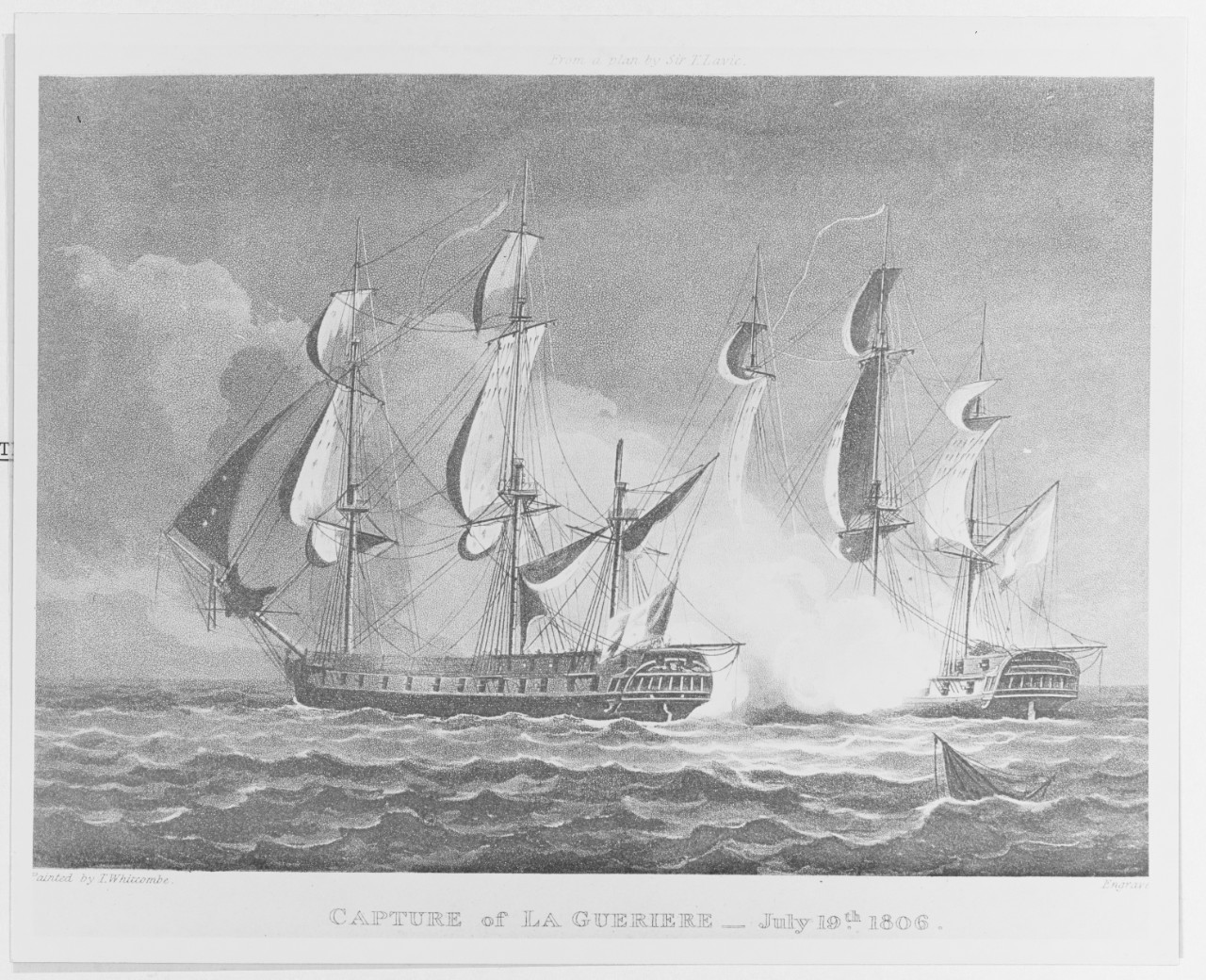-
Posts
2,173 -
Joined
-
Last visited
Content Type
Profiles
Forums
Gallery
Events
Everything posted by uss frolick
-

River Boat Wreck in North Dakota Found
uss frolick replied to mtaylor's topic in Nautical/Naval History
Since North Dakota and Oregon are practically neighbors, you need to hustle over there. Take your shovel, Mark, and a tape measure, and some hip waders too. We will be expecting reconstructed plans within a week. And don't forget the carvings ... -
On many draughts of French warships, from 74s down to flush deck ship-sloops, there is a separate single capstan on the forecastle, called a "fore jeer capstan". They are not just French items, as the builder's draught of the US Frigate Essex of 1799 shows one too. I had read that they were considered old fashioned by 1800. Question. What was it's function? It takes up valuable space and adds considerable weight over the forefoot, French hulls being notoriously tender forward, so it must have been important. What could it do that the main capstan couldn't?
-
This account was translated by officers of the US Army War College in 1939, the transcript of which was found in the National Archives. It was written by junior officers of La Vengeance, as Captain Pitot was too ill or injured to write his report until much later. The French Frigate La Vengeance was the very same frigate that fought the US Frigate Constellation in February of the same year. Vengeance was very powerful, having been designed with long 24-pounders on her main deck when launched, just like Constellation, but at one point swapped them out for 18-pounders, again, just like Constellation. Her armament has always been in question, but most likely consisted of thirty long 18-pounders on the main deck, two of them being shifting guns which fought either through the quarter gallery ports or were used a stern chase guns. Examination of the draught of her captured sister ship, La Resistance, shows a gunport in place of a proper gallery door, suggesting that the unusually narrow gallery might have been a false one. On her spar deck, she mounted fourteen 12-pounders, two of them standing stern chase guns, eight 36-pounder brass carronades, and eight swivels in the waist: fifty-two guns total. HMS Seine, formerly the French La Seine, was armed as a standard 38-gun British frigate of the era. Here is the letter: "2 Fructidor ( 20 August), at noon, we were bearing as follows: North Point of Mona E.S.E. Middle of Monisto E.S.E., 4 degrees E. Passing out from St. Domingue and Porto Rico, we perceived a large ship, which we took to be a frigate, to which a corvette was signalling. The Corvette lay E.S.E, 3 degrees south The ship, S.E. by E. It was calm, with what wind there was in the North East, our course being south by east, with all studding sails set on the port side, our intentions being to get away from shore, and out of sight of a third ship to the north east, which appeared of good size. Weather clear, all hands at quarters, and ready for any emergency. We were short of compliment by 71 hands, and among the crew were thirty negroes, who had never been to see before. During the night of 2-3 Fructidore (20-21 August), the wind was variable from E.N.E. to E. S. E. The enemy had a decided advantage of us. The corvette kept close to the frigate. At 12:15 a.m., the enemy having overhauled us considerably, we Brough our stern chasers to bear, and twice let him have them. At 1:15 he came close aboard and fired one shot at us. Believing we were then within musket shot, the Captain gave orders to man the port battery. At the same instant, we hauled out wind, and fired a broadside at the enemy, who replied immediately. We continued this action for an hour and three quarters, when the enemy dropped astern. We then took in our studding sails, and attempted to work to windward, the frigate's best point of sailing. By the advantage of hauling his wind, the Captain had but one end in view: to conform to his instructions which were imperative, that he should avoid action, and work clear of St. Domingue , which we knew to be blockaded by the British Frigate Aimable, and which we had recognized close aboard some day previous, but which hauled off. At three o'clock a.m., we lost sight of the enemy, but at five, we once more raised her, as well as, shortly after, a schooner crossing ahead. This we recognized as a neutral. At 5:30 a.m. the fore topmast split, carrying away the top-gallant sail and the standing jib. At 6.20, the enemy having once again run close aboard, the combat was renewed. At 6:50, he shortened sail, and at 7 brailed up his mizen topgallant sail; a little time after he took in his jib. We were then heading S.S.W. At 7:10, the enemy took in his studding sails. We then shortened sail, so at not to fall out of range. At 7:20, the enemy brailed his main top-sail to the mast. At once Captain Pitot took in his staysails, in order to keep alongside. At 7:40, the enemy ceased firing, and shortly after, we did the same. From the beginning of the second action, we found ourselves short of bar shot; repeatedly fired broke out between the decks, and on the poop and forecastle; there were frequent failures due to the poor quality of the powder, which became greatly impaired during our fight with the Constellation, when the containers were afloat in the magazine. There was never a chance to dry this out, while the Vengeance lay in Curacao, on account of the rains and dampness. These various incidents will be related by Captain Pitot, in due time. In the thick of the battle, one "Liron", a top man, had his knees smashed in the main top, and came down a stay, hand over hand, to the deck, whence he was carried below, and died a few moments after. We now had a fresh breeze from the east, and we continued to the S.S.W., under all sail possible, in order to give the gunners time to put what little powder remained into the cartridges for the cannon, and to perform necessary repairs; splicing etc.imperatively needed, and es[ecially to rig preventers to our shrouds which were severed fore and aft. We felt sure that the enemy, in these two engagements, had, at least, suffered damage equal to ours and later found evidence to confirm the correctness of our judgment. At 8:00 a.m., the enemy stood toward sand, at 9, when he approached to within pistol shot on our port quarter, we hauled our wind and the combat renewed with the greatest fury. At 9:20, the enemy set his mizzen-top-gallant sail a-shiver and edged off. We followed the maneuver to avoid being raked from ahead and to keep him on our beam. At 10 our mizzen-mast went by the board, shot away eight or nine feet above the poop. At 10:20 our main topmast fell. At 10:25 we found ourselves blanketed in such a way that the enemy was able to brace full and haul ahead and he thus lay himself across our bow. In such a position, offering no hope of maneuvering; many of or people being hors de combat; nine feet of water in the hold; the foremast barely holding; holed in many places; all the shrouds cut away; having only sufficient powder for 83 cartridges; these circumstances, together with the impossibility, of taking the only chance left to us; that of boarding the enemy; forced Captain Pitot to hail the enemy frigate and announce his surrender. It was then 10:30 a.m., and at 10;35 our foremast went by the board. A cutter from the enemy ship came along side and took off Captain Pitot, who, upon gaining the deck, presented his sword to the captain (Milne). He refused to accept it, saying "I could never disarm one who wielded his weapon with so great honor." The captain replied that he would not keep the sword unless his staff and the infantry officers among the passengers, could retain theirs. The English Captain said that he readily agreed to this, and that his orders would be given. The following morning, the main-mast toppled [over] close to the deck, and from that time, until our arrival at Jamaica, our destination, we were at many times at the point of abandoning ship, on account of the emmense quantity of water she was taking in. We had to put the wounded topside, the water being up to the gun deck. Since the crew was separated, it is impossible to ascertain the number of killed and wounded, but here follows the names of the officers killed and wounded. Officers of the ship Frey, Lieutenant of the artillery of the frigate, killed Ayreau, Lieutenant of the ship. wounded Marcou, Ensign, wounded Passenger officers Frey, Chief of the Battalion, Killed Nadau, Chief of the Brigade, wounded Garcey, Captain of the Infantry, wounded Desvignes, Captain of the Infantry, wounded Moreau, Captain of the Infantry, wounded Ballet, Lieutenant of the Infantry, wounded And there, Citizen Minister, you have an accurate and true account of the various events which occurred during their deplorable, but instructive voyage, just terminated. I am quite sure that if errors are found in this report, they will only be in the dates. Captain Pitot is ill onboard the English Frigate L'Allarme, alone, and we are, therefore, separated from him. He carries all the necessary documents to reveal the truth in its full light." Note: Not signed. Note also. The casualty French figures were thought to be about 35 killed and 70 wounded. Seine had about half as many. Half model of her sister ship La Resistance:
-
This price is a good deal. (Sorry to butt in, Michael ...) This beautiful ship had a great history: "Short history of her: Built in 1756 at Le Havre and designed by Jean-Joseph Ginoux.She took part in the Battle of Quiberon Bay and was eventually captured by the British in January 1761 by the HMS Unicorn. She was recommisioned as part of the Royal Navy in July 1761 with the name HMS Flora and was paid off in 1762 or 1763. Recommissioned in 1771 for Channel service. Sailed for Kronstadt on 2 June 1772, to deliver the new ambassador. Captain John Brisbane recommissioned her in December 1775. He then sailed Flora for North America on 29 April 1776. On 8 July 1777, Flora recaptured the Fox, which the Americans had captured a month earlier. On 30 May 1778 she sailed to support an attack at Fall River Massachusetts. On 30 July 1778 she was trapped among with other British ship in Narrngansett Bay.The captain ordered the naval vessels to land their guns, men, and stores for the benefit of the garrison at Newport. Flora was in the inner harbour and on 5 August Brisbane scuttled her in shallow water After the Americans recaptured Newport, they some time later refloated and repaired her. They sailed her to Bordeaux where the French Navy bought her in September 1784; she was known as Flore américaine, to distinguish her from Flore, built since. The French Navy refitted her in between January and May 1786. Then in 1787 Flore americaine was renamed Flore. The next year the Navy re-rated her as a corvette, and rearmed her with 8-pounder guns. The Navy struck her from the lists and hulked her at Rochefort in May 1789, disarming her some two years later, and then selling her on 4 July 1792. Her new, private owners, renamed her Citoyenne Française in April 1793. They commissioned her as a privateer out of Bordeaux in May. The French Navy requisitioned her in August, but then returned her to her former owners in December 1795. Her owners again deployed her as a privateer. On 8 September 1798 she was captured by HMS Phaeton and HMS Anson. When captured she was described as a frigate of 36 guns and 255 men. Flore was then sold for breaking up."
-
Wie Gehts, Alex!
You mentioned that the Razee Anson plans are now available. What would the costs be, with shipping to the United States?
Danke!
Steve, aka, USS Frolick
-
Summary of a letter held in the British National Archives describing a letter written by William Henry Percy, Captain of the Hermes, 20, dated May 8, 1814: "Folios 236-237: William Henry Percy, HMS Hermes, Spithead. Requests the iron guards round the skylights be replaced with copper ones as they interfere with the compasses." USS Frolick and Wasp in the same year had brass guards. So Hermes already had iron ones, presumably cheaper. Copper one would required a lot of cleaning lest they green up. And how strong would copper guards be against a falling spar? Hermes would be destroyed in battle off Mobile, Alabama later that year. Source: https://discovery.nationalarchives.gov.uk/details/r/C16901176
-

Body plan line
uss frolick replied to Don Case's topic in Building, Framing, Planking and plating a ships hull and deck
... or the draftsman sneezed 🤧... -
First production Panthers, Ausf D’s, we’re grey, but only a handful used for training and evaluation. Afterwards they were dunkelgelb, or dark yellow, with greens and browns applied in the field. Some were painted camo in the factory in 1944. When paint ran out many last ditch panthers were shipped in rust brown primer, on which whatever available paint was used to camouflage it. No grey panthers in the field, although rumors of one painted all green have not been confirmed. The early grey prototypes never made it into the field. Hauptmann Panzerfuehrer Frolick!
-
So when you say gunwale, you mean cap-rail. I had a copy of Caruana, Volume II, and sold it for a goodly profit. I didn't like it. The cannon barrel drawings were too large, and they all disappeared in the binding of the thick book, making them of little practical utility. There was quite a bit of useful written data, however, showing various individual ship armaments at shapshots in time .
-
This horizontal dashed line, above the cap-rail, might be an attempt to gain an extra inch or so in the port, because it was about to receive a carronade which the schooner was not originally designed for. Carronades required extra height, compared to an equivalent weight long gun, due to their bottom ring-trunnion mount. Because at full elevation, the run out carronade had to clear the cap rail. It would have been expensive to rebuilt the vessel with higher timbers, but iron cap-rail height extenders (for lack of a better term), would buy the needed room. I've seen this done before in iron (HMS Princess Charlotte on Lake Ontario in 1814 received a pair of 68 pounder carronades on her quarterdeck!) and even an example, possibly done in wood, on HM Prize Schooner Grecian, which was rearmed with 18-pounder carronades, even though she was built for 12-pounder carronades and long guns. Your schooner may have been designed for four-pounder long guns (or sixes), but would have eventually been rearmed with twelve-pounder carronades. 1800 was a transitional period for naval armament. Cheers!
-

Lost voices from HMS Guerriere: Court Martial testimony.
uss frolick replied to uss frolick's topic in Nautical/Naval History
While no plans survive of HMS Guerriere, either in French or English archives we do have an idea what she looked likeLa Guerierre was built at Cherbourg to a design of an engineer named La Fosse. We do know that she was begun as a Romaine Class frigate, a smaller 24-pounder type, but lengthened into a standard 18-pounder ship on the stocks. Nine were built and completed to the original design. We know what the original class looked like, because the original French builders draught survives, and two of the class were taken, L'Immortalite and La Desiree', and their draughts survive in the NMM. They all have a very round midship section, required because the initial draught called for a 10" mortar amidships, and a full midship reduces the recoil downward into the water! At length, all were rearmed with twenty-four 24-pounders on the main deck. The last ships of the class were converted by lengthening them by about 15 feet. Plans for two of these survive, HMS Pique, 36, which has an ironic Constitution connection in 1814 under Captain Stewart, and HMS La Furieuse, 38. A coulee others were altered on the stocks later as well. La Furieuse was fitted out "en flute" when captured in 1806, and was used by the French as an armed troop transport mounting twenty heavy guns. She was taken by the 20-gun sloop of war HMS Bonne Citoyenne in an epic day-long battle. Here are her plans. This reflects her as fitted as a transport, without forecastle barricades. Note the beak-head bulkhead which Guerriere did not have. Note also the nine windows across her stern, a large number shared by Pique, Desire, L'Immortalite, and a Roux painting of sister L'Incorruptable. Note the round midship: So if anyone wanted to build La Guerriere, one option would be to start with La Furieuse, add forecastle bulwarks and an armed bridle-port, and put thirty long 18-pounders on the main deck. La Guerriere taken by HMS Blanche in 1806:
About us
Modelshipworld - Advancing Ship Modeling through Research
SSL Secured
Your security is important for us so this Website is SSL-Secured
NRG Mailing Address
Nautical Research Guild
237 South Lincoln Street
Westmont IL, 60559-1917
Model Ship World ® and the MSW logo are Registered Trademarks, and belong to the Nautical Research Guild (United States Patent and Trademark Office: No. 6,929,264 & No. 6,929,274, registered Dec. 20, 2022)
Helpful Links
About the NRG
If you enjoy building ship models that are historically accurate as well as beautiful, then The Nautical Research Guild (NRG) is just right for you.
The Guild is a non-profit educational organization whose mission is to “Advance Ship Modeling Through Research”. We provide support to our members in their efforts to raise the quality of their model ships.
The Nautical Research Guild has published our world-renowned quarterly magazine, The Nautical Research Journal, since 1955. The pages of the Journal are full of articles by accomplished ship modelers who show you how they create those exquisite details on their models, and by maritime historians who show you the correct details to build. The Journal is available in both print and digital editions. Go to the NRG web site (www.thenrg.org) to download a complimentary digital copy of the Journal. The NRG also publishes plan sets, books and compilations of back issues of the Journal and the former Ships in Scale and Model Ship Builder magazines.









